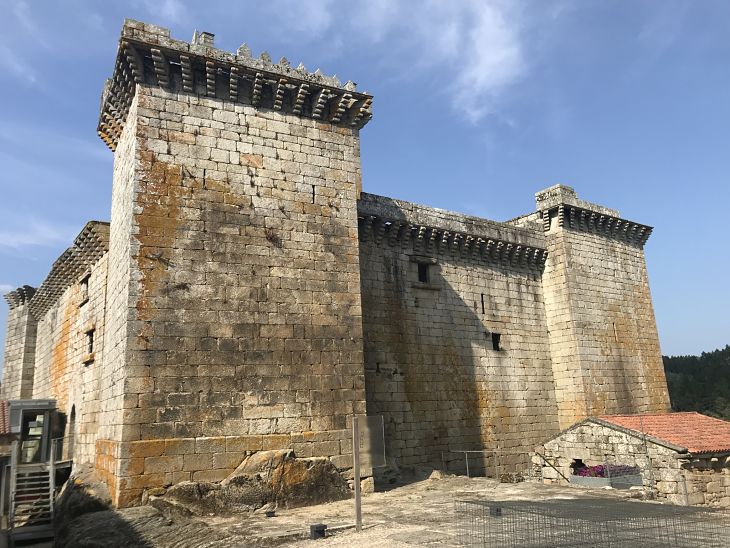-
La aeronáutica suiza Pilatus anuncia su implantación en Sevilla

La empresa suiza Pilatus Aircraft Ltd, líder en fabricación de jets privados y aviones de entrenamiento militar en Europa, ha anunciado su implantación en la provincia de Sevilla, concretamente en el municipio sevillano de Carmona, con el objetivo de ampliar su presencia dentro de Europa. Según ha informado la multinacional, este proyecto se desarrollará a…
-
El campeón cree que el cierre parcial del estadio de Getafe por incidentes de abuso racista “no estuvo bien”

A principios de este mes, Getafe tuvo que cerrar parcialmente su estadio después de que uno de sus seguidores abusara racialmente del defensa del Sevilla Marcos Acuña durante el encuentro de los dos equipos en el Coliseo el 30 de marzo. El portero del Getafe, David Soria, considera que el castigo recibido por el Club…
-
Descoperirea epavei Titanicului: o piatră de hotar în istoria explorării subacvatice – Știri din Valencia

Știri din Valencia – Știri din Valencia La mai bine de 70 de ani de la tragica sa scufundare, Titanicul a fost în sfârșit localizat, dezvăluind secrete care au captivat oamenii de știință și publicul deopotrivă. Scufundarea Titanicului din aprilie 1912 a fost profund gravată în memoria colectivă, nu numai din cauza tragediei în sine,…
-
Un ihtiosaur uriaș găsit în Regatul Unit ar putea fi cea mai mare reptilă marine din istorie – Știință Știri

Justin și Ruby Reynolds, tată și fiică, împărtășesc un interes comun: căutarea fosilelor. În 2020, în timp ce se plimbau pe plaja de la Blue Anchor din Somerset, Regatul Unit, au descoperit o fosilă într-o stâncă pe care cineva o lăsase lângă o bucată de calcar cu cristale de pirit. Era un os uriaș care…
-
Controversa proiectului Altri – Știri din Spania

Controversele au explodat cu proiectul multinațional portughez Altri, susținut de Xunta de Galicia pentru a fi inclus în PERTE-uri cu finanțare din fondurile Next Generation UE. Galicia Debate nu dorește să ignore analiza proiectului și să încerce să facă lumină asupra naturii acestuia, a consecințelor de mediu, sociale și economice pentru Galicia și în special…
-
Cine Yelmo oferă 5 animale de pluș jaguar – Cadouri și mostre gratuite – Știri de agrement

Nu rata giveaway-ul Cinema cu cască pentru că dăruiește 5 animale de pluș ale Speranței, din filmul Emma și Jaguarul Negru. Emma și Jaguarul Negru este un film regizat de Gilles de Maistre și este despre Emma, o fată de 14 ani care trebuie să părăsească jungla amazoniană și cea mai bună prietenă a ei…
-
Explorând ruinele unei cetăți medievale ascunse în pădure
Explorând ruinele unei cetăți medievale ascunse în pădure Există locuri în lume în care istoria pare să fi fost păstrată la fel de bine ca într-un muzeu. Ruinele unei cetăți medievale ascunse în pădure sunt unul dintre acele locuri magice care te fac să te întrebi cum arăta viața acum sute de ani. Acest articol…
-
La lavadora a presión Muc-Off se vuelve móvil, deja que el chorro de espuma de nieve lave tu bicicleta en cualquier lugar

¡Apoyanos! Bikerumor puede ganar una pequeña comisión por los enlaces de afiliados de este artículo. Aprende más Hace cinco años estábamos mentalizados con Muc-Off hidrolimpiadora específica para bicicletas – aunque con una importante limitación solucionada – pero eso ya es historia con la nueva lavadora a presión móvil Muc-Off, autónoma y alimentada por batería. Viaja…
-
La lavadora a presión Muc-Off se vuelve móvil, deja que el chorro de espuma de nieve lave tu bicicleta en cualquier lugar

¡Apoyanos! Bikerumor puede ganar una pequeña comisión por los enlaces de afiliados de este artículo. Aprende más Hace cinco años estábamos mentalizados con Muc-Off hidrolimpiadora específica para bicicletas – aunque con una importante limitación solucionada – pero eso ya es historia con la nueva lavadora a presión móvil Muc-Off, autónoma y alimentada por batería. Viaja…
-
¡“Yamato Forever REBEL3199” incluye los primeros cortes! Publicado el segundo anuncio especial de “Capítulo 1: Invasión Negra”

¡“Yamato Forever REBEL3199” incluye los primeros cortes! Publicado el segundo anuncio especial de “Capítulo 1: Invasión Negra” Contenido original en Inglés
